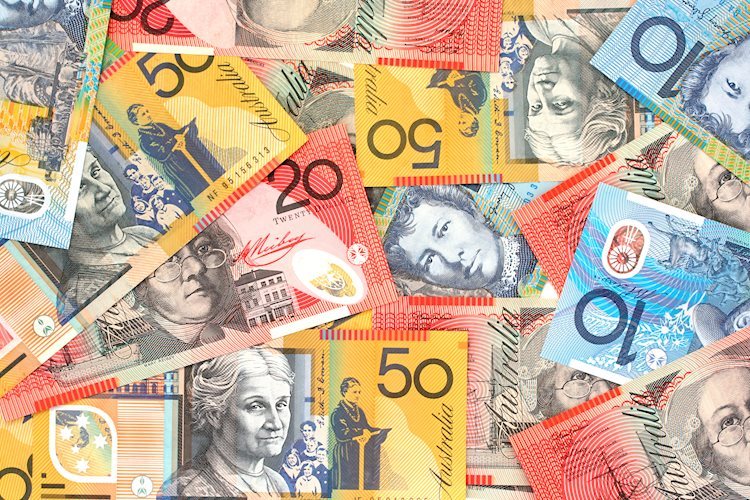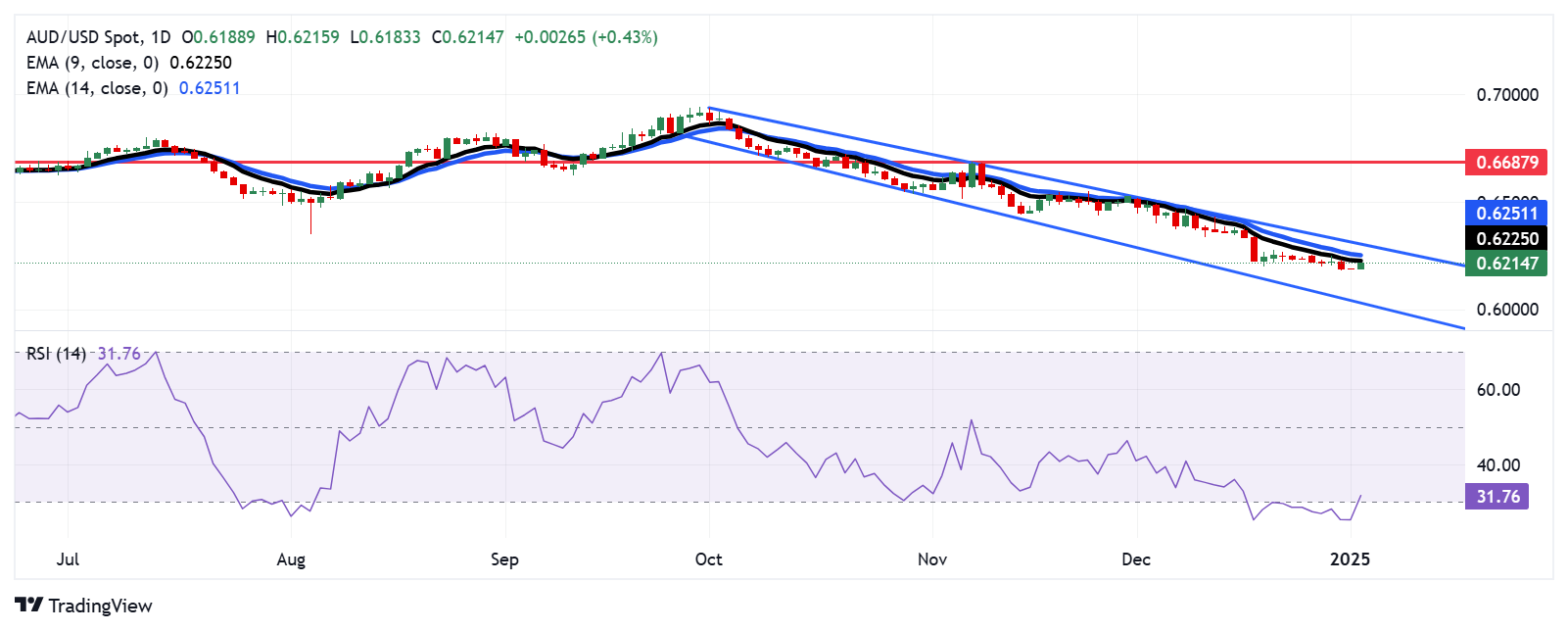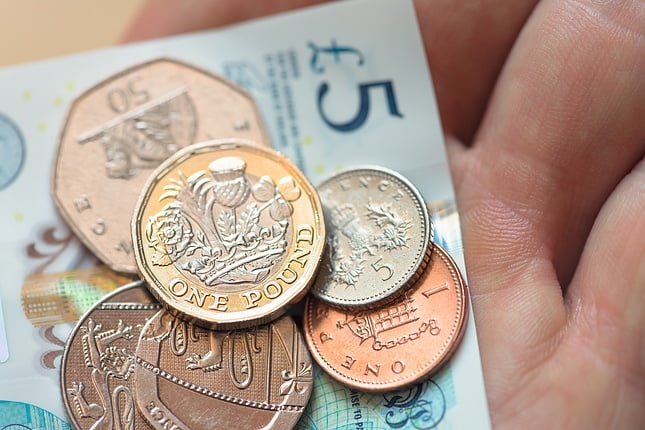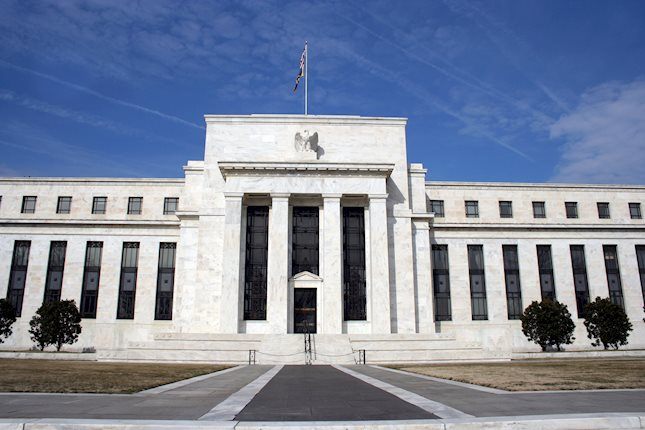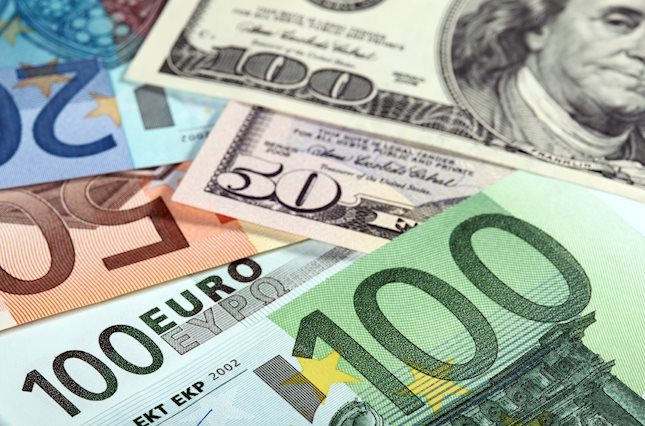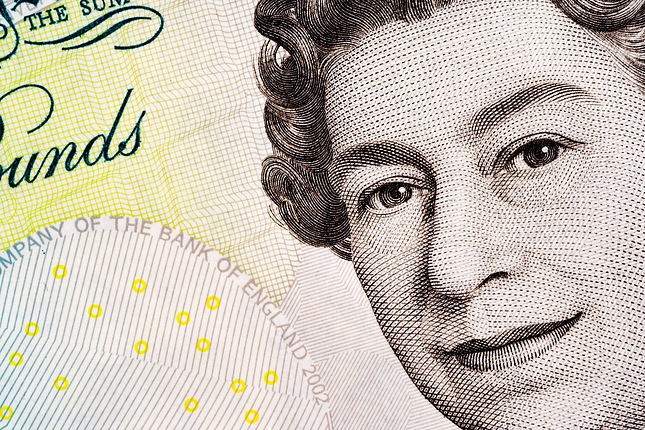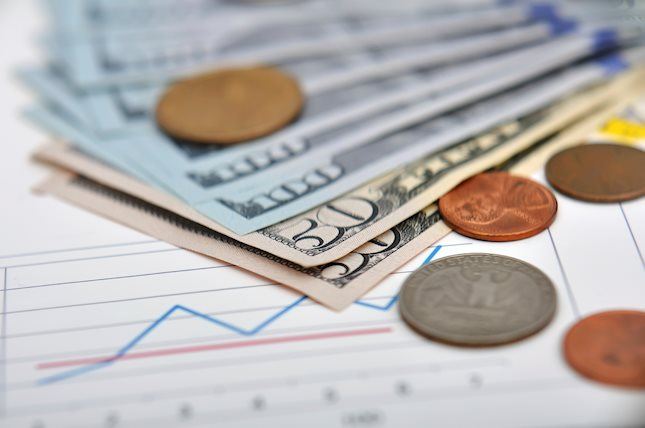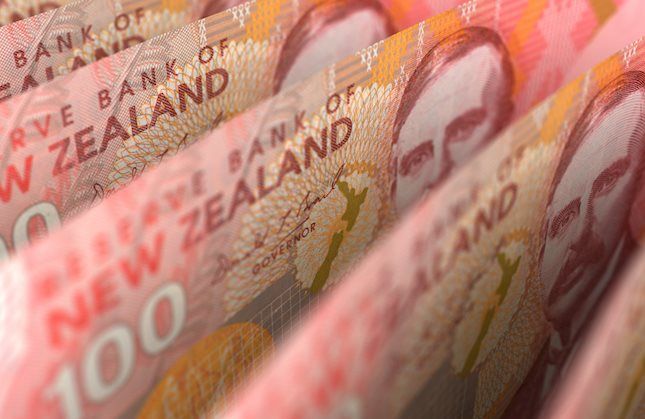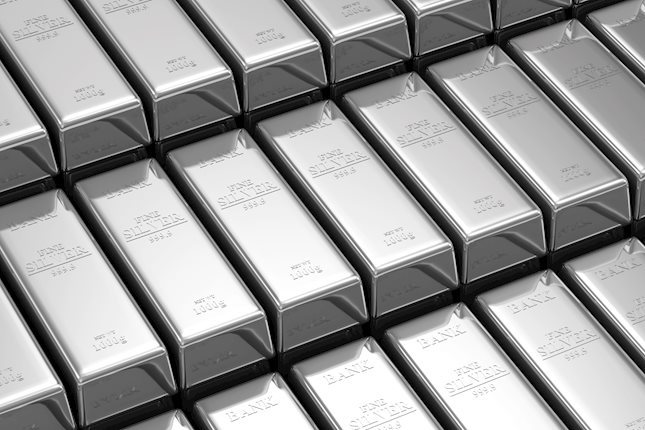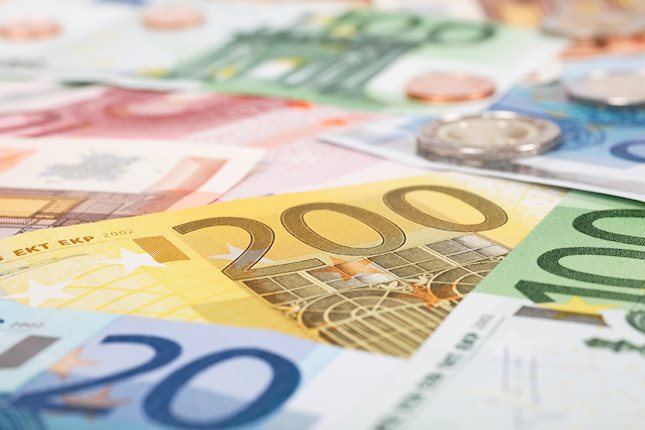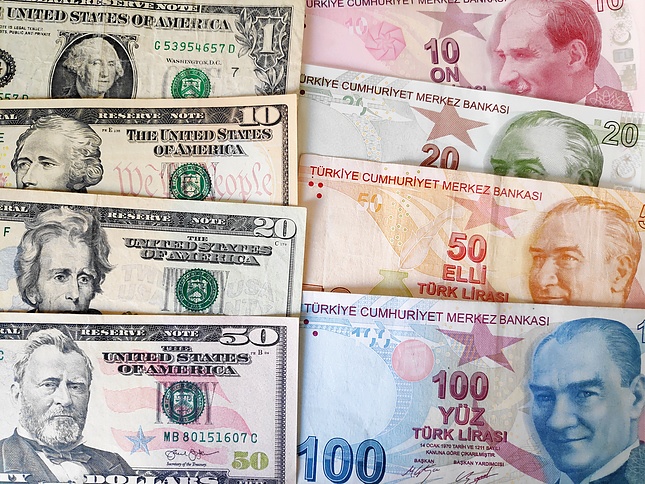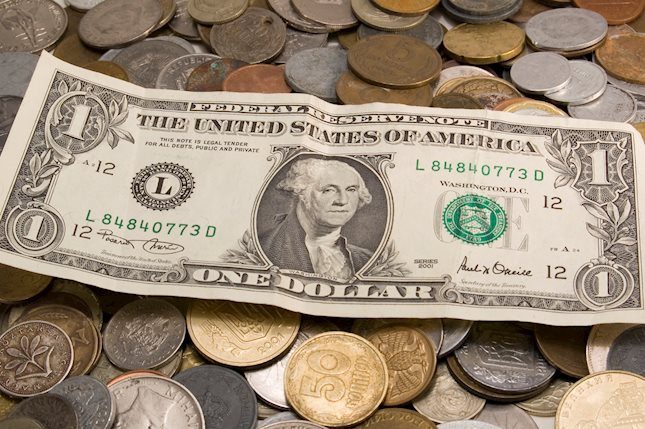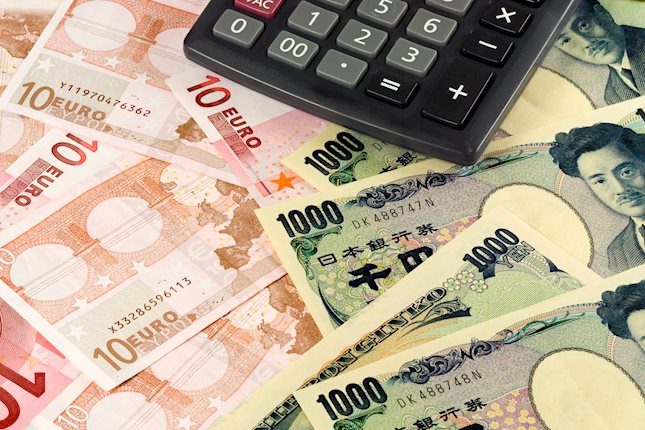Australian Dollar holds ground ahead of US Jobless Claims
- The Australian Dollar receives support after the release of China's Caixin Manufacturing PMI on Thursday.
- China's manufacturing output in December continued to expand, marking its 14th consecutive month in growth territory.
- The US Dollar Index bounced back to multi-year highs due to the Federal Reserve's hawkish policy shift.
The Australian Dollar (AUD) gains ground against the US Dollar (USD) after the Caixin Manufacturing Purchasing Managers’ Index (PMI) from China was released on Thursday. As close trade partners, any fluctuations in China's economy tend to impact Australian markets. Looking ahead, the US weekly Initial Jobless Claims and S&P Global Manufacturing PMI for December will be eyed later in the North American session.
China's Caixin Manufacturing PMI unexpectedly dropped to 50.5 in December, down from 51.5 in November. The market had anticipated a reading of 51.7 for the month. Wang Zhe, an economist at Caixin Insight Group, commented, “Supply and demand expanded. Manufacturers’ output and demand continued to grow as the market improved. The gauge for output remained in expansionary territory for the 14th consecutive month, while total new orders increased for the third straight month.”
The Reserve Bank of Australia’s (RBA) policymakers had grown more confident about inflation, though risks persisted. The board emphasized the need for monetary policy to remain "sufficiently restrictive" until there was greater certainty about inflation.
Australian Dollar appreciates despite a stronger US Dollar amid Fed’s hawkish policy shift
- The US Dollar Index (DXY), which tracks the value of the US Dollar against six major currencies, has rebounded to multi-year highs, trading around 108.50 at the time of writing. This surge is attributed to the US Federal Reserve's (Fed) hawkish policy shift.
- The Federal Reserve may adopt a more cautious outlook regarding further rate cuts in 2025, signaling a shift in its monetary policy stance. This change reflects uncertainties surrounding potential policy adjustments in light of the anticipated economic strategies of the incoming Trump administration.
- Escalating geopolitical tensions in the Middle East and the ongoing Russia-Ukraine war are likely to support the USD, a traditional safe-haven currency, in the near term. Analysts at Action Economics observed, “The greenback has been boosted by rising growth concerns elsewhere against the backdrop of geopolitical risk.”
- Traders are cautious regarding President-elect Trump’s economic policies, fearing that tariffs could increase the cost of living. These concerns were compounded by the Federal Open Market Committee’s (FOMC) recent projections, which indicated fewer rate cuts in 2025, reflecting caution amid persistent inflationary pressures.
- China's official Manufacturing PMI slipped to 50.1 in December, down from 50.3 in the previous reading and below market expectations of 50.3. Meanwhile, the NBS Non-Manufacturing PMI improved significantly, rising to 52.2 in December from November's 50.0 and beating estimates of 50.2.
- The RBA board noted that if future data aligns with or falls below forecasts, it would bolster confidence in inflation and make it appropriate to start easing policy restrictions. However, stronger-than-expected data could require maintaining restrictive policies for a longer period.
- Reserve Bank of Australia Governor Michele Bullock highlighted the continued strength of the labor market as a key reason the RBA has been slower than other nations to commence its monetary easing cycle.
Australian Dollar rises above 0.6200, next barrier appears at nine-day EMA
The AUD/USD pair trades near 0.6210 on Thursday, maintaining a bearish outlook on the daily chart as it trades within a descending channel pattern. The 14-day Relative Strength Index (RSI) has rebounded above 30, hinting at the possibility of a near-term upward correction.
Immediate resistance lies at the nine-day Exponential Moving Average (EMA) at 0.6225, with the next obstacle at the 14-day EMA at 0.6251. A key resistance level is the descending channel’s upper boundary, around the psychological mark of 0.6300.
On the downside, the AUD/USD pair could navigate the support region near the lower boundary of the descending channel, around 0.6040.
AUD/USD: Daily Chart
Australian Dollar PRICE Today
The table below shows the percentage change of Australian Dollar (AUD) against listed major currencies today. Australian Dollar was the strongest against the US Dollar.
| USD | EUR | GBP | JPY | CAD | AUD | NZD | CHF | |
|---|---|---|---|---|---|---|---|---|
| USD | -0.08% | -0.10% | -0.38% | -0.05% | -0.41% | -0.32% | -0.15% | |
| EUR | 0.08% | -0.09% | -0.23% | 0.00% | -0.29% | -0.28% | -0.07% | |
| GBP | 0.10% | 0.09% | -0.18% | 0.06% | -0.30% | -0.20% | -0.09% | |
| JPY | 0.38% | 0.23% | 0.18% | 0.23% | -0.10% | -0.07% | 0.10% | |
| CAD | 0.05% | -0.01% | -0.06% | -0.23% | -0.37% | -0.30% | -0.11% | |
| AUD | 0.41% | 0.29% | 0.30% | 0.10% | 0.37% | 0.02% | 0.05% | |
| NZD | 0.32% | 0.28% | 0.20% | 0.07% | 0.30% | -0.02% | 0.23% | |
| CHF | 0.15% | 0.07% | 0.09% | -0.10% | 0.11% | -0.05% | -0.23% |
The heat map shows percentage changes of major currencies against each other. The base currency is picked from the left column, while the quote currency is picked from the top row. For example, if you pick the Australian Dollar from the left column and move along the horizontal line to the US Dollar, the percentage change displayed in the box will represent AUD (base)/USD (quote).
Australian Dollar FAQs
One of the most significant factors for the Australian Dollar (AUD) is the level of interest rates set by the Reserve Bank of Australia (RBA). Because Australia is a resource-rich country another key driver is the price of its biggest export, Iron Ore. The health of the Chinese economy, its largest trading partner, is a factor, as well as inflation in Australia, its growth rate and Trade Balance. Market sentiment – whether investors are taking on more risky assets (risk-on) or seeking safe-havens (risk-off) – is also a factor, with risk-on positive for AUD.
The Reserve Bank of Australia (RBA) influences the Australian Dollar (AUD) by setting the level of interest rates that Australian banks can lend to each other. This influences the level of interest rates in the economy as a whole. The main goal of the RBA is to maintain a stable inflation rate of 2-3% by adjusting interest rates up or down. Relatively high interest rates compared to other major central banks support the AUD, and the opposite for relatively low. The RBA can also use quantitative easing and tightening to influence credit conditions, with the former AUD-negative and the latter AUD-positive.
China is Australia’s largest trading partner so the health of the Chinese economy is a major influence on the value of the Australian Dollar (AUD). When the Chinese economy is doing well it purchases more raw materials, goods and services from Australia, lifting demand for the AUD, and pushing up its value. The opposite is the case when the Chinese economy is not growing as fast as expected. Positive or negative surprises in Chinese growth data, therefore, often have a direct impact on the Australian Dollar and its pairs.
Iron Ore is Australia’s largest export, accounting for $118 billion a year according to data from 2021, with China as its primary destination. The price of Iron Ore, therefore, can be a driver of the Australian Dollar. Generally, if the price of Iron Ore rises, AUD also goes up, as aggregate demand for the currency increases. The opposite is the case if the price of Iron Ore falls. Higher Iron Ore prices also tend to result in a greater likelihood of a positive Trade Balance for Australia, which is also positive of the AUD.
The Trade Balance, which is the difference between what a country earns from its exports versus what it pays for its imports, is another factor that can influence the value of the Australian Dollar. If Australia produces highly sought after exports, then its currency will gain in value purely from the surplus demand created from foreign buyers seeking to purchase its exports versus what it spends to purchase imports. Therefore, a positive net Trade Balance strengthens the AUD, with the opposite effect if the Trade Balance is negative.
Forex News
Keep up with the financial markets, know what's happening and what is affecting the markets with our latest market updates. Analyze market movers, trends and build your trading strategies accordingly.
